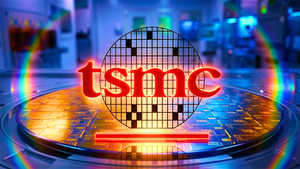(BPT) - A diagnosis of advanced ovarian cancer can feel overwhelming, emotionally, physically and mentally. There are many decisions to make, and one empowering way to take control is to understand as much as possible about your specific tumor.
For people diagnosed with advanced ovarian cancer, this means knowing your tumor's HRD status, which can help your health care team treat your specific type of cancer.1 The more information your doctors have, the better equipped they are to recommend a treatment plan that fits you.
Understanding HRD
HRD stands for homologous recombination deficiency, a term that refers to a tumor's inability to repair certain types of DNA damage, which impacts how cancer cells grow, die and respond to different treatments.2 About 50% of people with advanced ovarian cancer have tumors that are HRD-positive, which is why testing can be so important.2
To find out your HRD status, doctors may recommend a tumor test, also known as a genomic or biomarker test.3 This type of test looks at the DNA in your tumor to detect both inherited and acquired mutations.3 It can identify changes that may influence how your cancer grows or responds to treatment.1
This is different from genetic testing, which looks at inherited genes in your DNA (such as BRCA1 or BRCA2). Genetic tests can help identify the potential for developing certain diseases, including some cancers.3
The Importance of HRD Testing
When doctors understand more about a tumor's biology, including biomarkers like HRD, they can tailor treatments more precisely. This approach, called precision or personalized medicine, helps match you with therapies that are most likely to be effective for your specific type of cancer and avoid those that are less likely to help.3
Treatment options for advanced ovarian cancer could depend on the results of your HRD status and may include surgery, chemotherapy or targeted therapies.4
How Do I Get Tested?
The first step is simple: talk to your doctor about HRD testing. It usually requires a tissue sample from a tumor, which may be collected during surgery or a biopsy.1 Your health care team can explain the process and what your results might mean for your treatment.
Support To Help You Feel Informed
When you understand your cancer more fully, you may feel more equipped to ask questions, make decisions and share what matters most to you. That kind of clarity can help you feel supported and heard throughout your journey.
To help you get started, TestForHRD.com offers trusted resources, including:
- A Doctor Discussion Guide to support conversations with your care team
- An FAQ section based on common patient experiences
- Additional insights and tools to help you feel more confident and less alone
Take the next step in understanding your diagnosis. Visit TestForHRD.com for information and support.
References:
1 Medical News Today. What to know about HRD testing for ovarian cancer. Accessed July 16, 2025. https://www.medicalnewstoday.com/articles/hrd-positive-ovarian-cancer.
2 AstraZeneca Precision Medicine. HRD in Advanced Ovarian Cancer. Accessed July 16, 2025. https://www.azprecisionmed.com/ovarian-cancer/hrd-testing.
3 National Cancer Institute. Biomarker testing for cancer treatment. Accessed July 16, 2025. https://www.cancer.gov/about-cancer/treatment/types/biomarker-testing-cancer-treatment.
4 Centers for Disease Control and Prevention. Treatment of Ovarian Cancer. Accessed July 16, 2025. https://www.cdc.gov/ovarian-cancer/treatment/index.html.
US-103453 Last Updated 7/25





